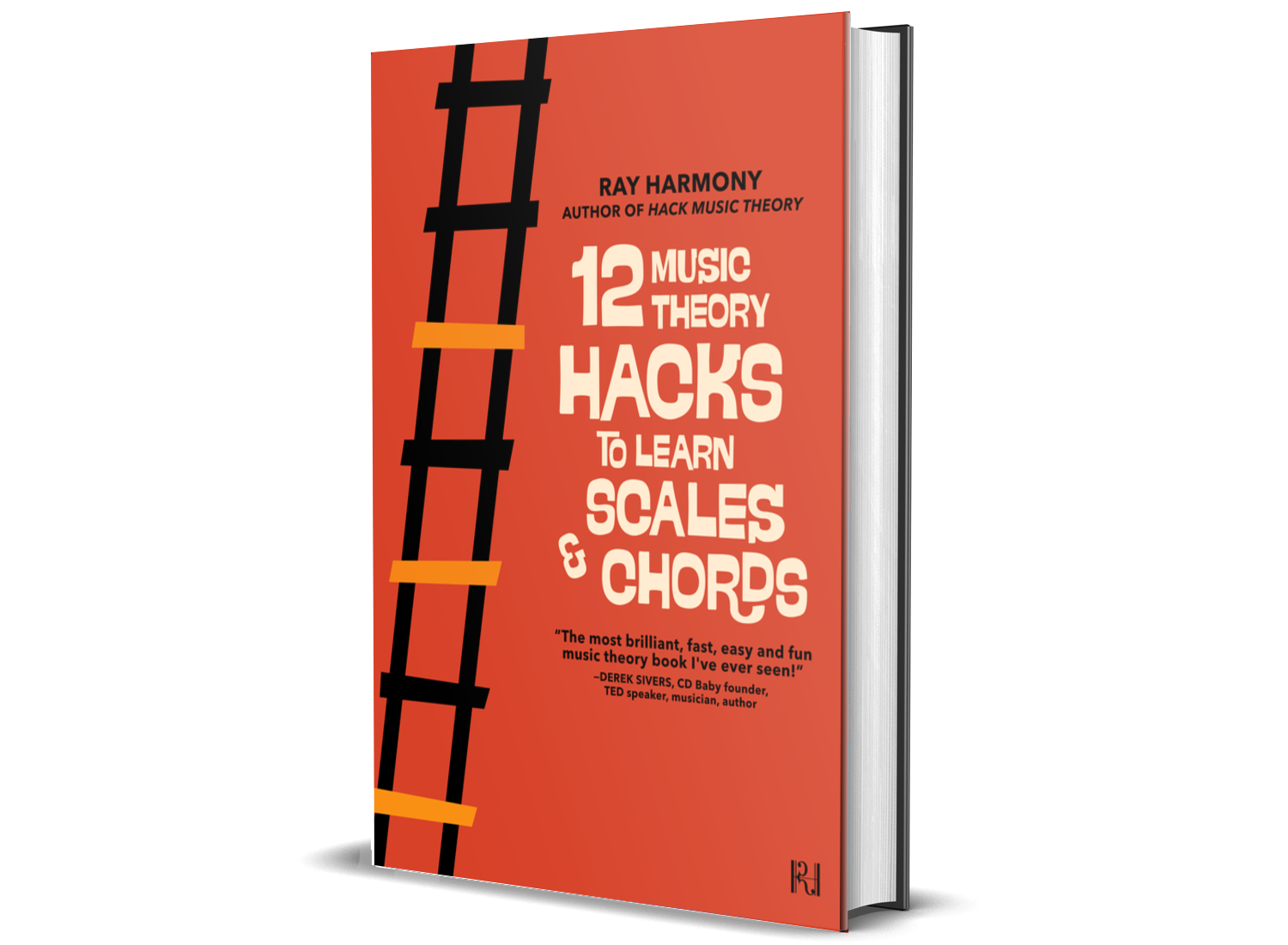How to Write
Chromatic Bass Lines
Download PDF Tutorial
includes MIDI + WAV file examples
Intro.
There aren’t many songs where the bass is in the spotlight. And there’s a good reason for that: Most bass lines suck! Of course there are exceptions, but in most genres the bass is nothing more than a frequency. Its only function is to fill out the bottom end of the sound. Thankfully though, not all genres have sucky bass lines.
Thank you, funk! Yep, funk is one of the only genres in which most songs (usually) contain real bass lines. In other words, actual melodies played on the bass.
You see, that’s what makes a real bass line. If a bass merely plays the root note of each chord, then that bass is perceived by the listeners as a frequency (not a melody). That’s why songs with good bass lines also have more depth, because their bass is adding a musical layer with both melodic and rhythmic independence.
An example of a great bass line can be heard in the new single “We Got U” by American funk band The Motet. Not only does this song kick off with an amazing bass line, but respect is due to their bassist Garrett Sayers for being able to play so fast, and with so much groove. It’s a complex bass line, but in this PDF we’ll break down its elements and teach you how to use them to make your own version.
So, inspired by “We Got U”, here’s our easy method for writing great bass lines (in any genre) with chromaticism. What’s that? Read on to find out. But first… Tea!
Step 1. Mixolydian Mode
Open your DAW, leave the time signature on 4|4, but change your tempo to 111 BPM. Next, create a four-bar loop on your bass track, with a 1/16 note grid.
Right, so the first unusual element about this bass line is its mode: Mixolydian. Mixolydian is a very underused mode, and that makes this bass line instantly stand out. If you’re new to Mixolydian, it’s just all the white notes from G up to G.
G Mixolydian
The first thing you’ll notice about Mixolydian is that it’s a major mode, i.e. it has a major 3rd (3). The next thing you’ll notice about it is its last note, which is a minor 7th (♭7).* As Mixolydian is major, listeners will be expecting a major 7th (7).**
The ♭7 is the only note that makes Mixolydian different to the major scale, so it’s vital to play that ♭7, otherwise it will just sound like the major scale. If you play Mixolydian a few times, you’ll hear that it sounds like a slightly sad version of the major scale, a.k.a. the “happy” scale. It’s amazing the difference one note makes, right? The major scale is known for its use in children’s music (and Christmas songs), due to its uplifting childlike quality. However, by simply moving its 7th note down one semitone, we create a mode that sounds like an adult version of the major scale. And that’s why Mixolydian should be used way more often: it brings the uplifting nature of the major scale, but without its childlike vibe.
Before we get writing, just a quick update. The Motet use E Mixolydian for their bass line, so if you programmed in those MIDI notes we mentioned above (from G to G), grab them all and move ‘em down to E. Now you’ve got E Mixolydian.
E Mixolydian
*Remember to use 3 and ♭7 a few times in your bass, as they’re what make Mixolydian unique!
**Wanna learn all the modes & how to use them? Read our Songwriting & Producing PDF.
Step 2. Chromatic Notes
For the record, a bass line in Mixolydian would already stand out. But, that wasn’t enough for The Motet. They spiced up this underused mode with not one but two chromatic notes! So what’s a chromatic note? It’s simply a note that is not in the scale/mode. And by the way, another word for chromatic is non-diatonic, so you’ll see both of those terms being used to describe notes outside the scale/mode. So, what two chromatic notes did they add? To read the rest of this tutorial, please buy the PDF. Supporting our work helps us to keep teaching. Thank you :)
Download PDF Tutorial
Lastly, are you new to music theory? Or are you experienced, but you want a refresher? Then download our FREE BOOK (link opens in new tab). It only takes 30 minutes to read, then you’ll have a solid theory foundation that you can instantly apply to your songwriting and producing. Enjoy!

Ray Harmony
Multi award-winning college lecturer
